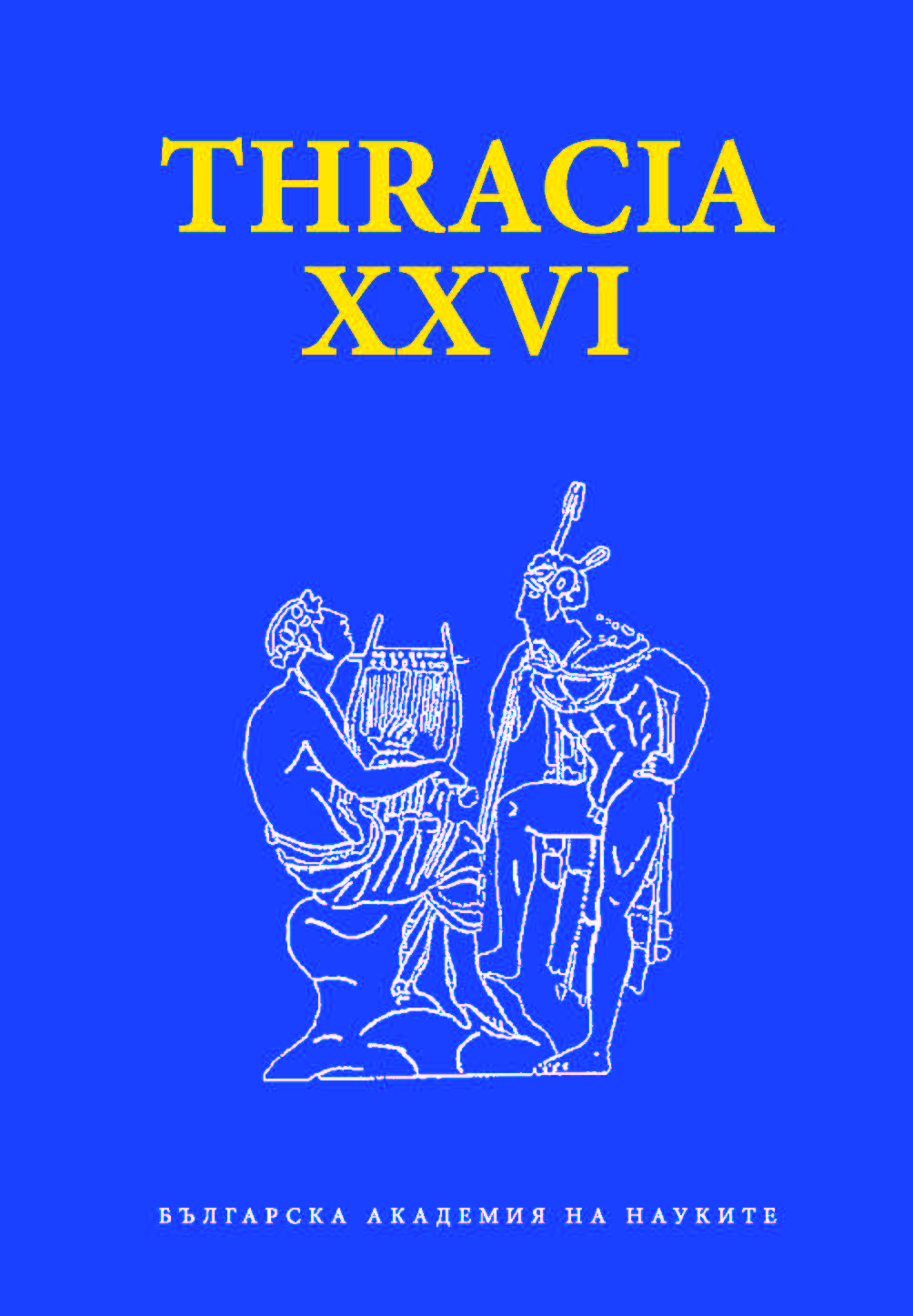НОВИ НАБЛЮДЕНИЯ ЗА ПОХОДИТЕ НА ФИЛИП ІІ В ТРАКИЯ МЕЖДУ 342 И 339 Г. ПР. ХР. И МАКЕДОНСКАТА КОЛОНИЗАЦИЯ МЕЖДУ ХЕМУС И РОДОПИТЕ
NEW OBSERVATIONS ON THE CAMPAIGNS OF PHILIP II IN THRACE BETWEEN 342 AND 339 BC AND THE MACEDONIAN COLONIZATION BETWEEN THE HAEMUS AND THE RHODOPES
Author(s): Metodi ManovSubject(s): History, Anthropology, Social Sciences, Archaeology, Customs / Folklore, Comparative history, Military history, Ancient World, Cultural Anthropology / Ethnology, Culture and social structure
Published by: Институт за балканистика с Център по тракология - Българска академия на науките
Keywords: Thrace; Haemus Mountains; Philip II; Odrysians; Odrysian capital;
Summary/Abstract: The campaigns of the Macedonian king Philip II in Thrace in the years between 342 and 339 BC and his colonization activities in the Thracian lands south of the Haemus Mountains have been the subject of numerous scholarly studies and discussions. But due to the scarcity and fragmentary nature of the information of ancient authors, a number of details about these campaigns, as well as the fate of the Thracian rulers Teres II and Kersebleptes, remained unclear. Everything written so far about these campaigns has been presented only theoretically. In recent years, even some innovative ideas and solutions on these issues, as well as some reliable data obtained from archaeological research, have been ignored by most researchers studying the history of Thracian lands in antiquity. So far, all modern authors have suggested that the campaigns of Philip II in Thrace in those years began with a starting position from the area of the confluence of the river Hebros (now Maritsa) in the Aegean Sea and were carried out along the valleys of the rivers Maritsa and Tundzha from this direction. This paper presents completely new data on the routes of these campaigns of Philip II in Thrace and also presents new locations and new interpretations of the colonization of the Macedonian ruler in the Thracian lands between the Haemus (Stara Planina) and the Rhodope Mountains. As evidence of the actual direction of the campaigns of Philip II here are used and some specific archaeological finds, which are items of armament, directly belonging to the troops of the Macedonian ruler Philip II. In fact, the direction of the campaigns of Philip II in Thrace in the years 342 and 341 BC was quite different from previous ideas and theoretical constructions. Since the current readings are dedicated to Prof. Al. Fol, here I definitely want to mention one of his very important hypotheses, which is shared in passing in just a few sentences, but is in the right direction. In his monograph on the history of Thrace during the early Hellenistic period, yet in 1975, he said that it was very likely that the alliance with the Thracian tribe of Agrianes lead by their chieftain Langarus was concluded on the eve of Philip’s decisive campaigns in Thrace against Kersebleptes in 342 and 341 BC. In fact, after capturing the Parorbelia region in the middle reaches of the Strymon and the lands near the Kresna Gorge, as well as the Strumeshnitsa river valley as early as 347 BC, Philip II began his new campaigns to conquer the Odrysian states, bypassing in the back of the Odrysians – through the western Thracian lands. In practice, the lands of the Agrianes in today’s Pernik region have become the main and most convenient base for the troops of Philip II to invade the lands of the Odrysians. Philip II had taken into account the situation that it was best, by gradually entering, to control the Sub-Balkan fields first. That is why all Macedonian troops headed east from today’s Sofia plain and entered the Sub-Balkan fields. Philip II’s troops made large camps in the valleys between the Balkan Mountains and Sredna Gora, and from there sent significant units against the Thracians. Thus in the autumn of 342 BC, part of the armies of Philip II reached the fortified Odrysian hunting residence, located near the top of Kozi Gramadi in Sredna Gora, where the Thracian ruler Teres II was hiding. In the battles between the Macedonian and Thracian troops, Teres II died there, and his wife and his son, named Sitalkes, were captured and sent to Pella as special hostages. This Sitalkes was the same person mentioned by the ancient author Arrian to have led Thracian units in the troops of Alexander the Great during his great campaign against Persia. Here are presented solid archaeological evidence of these battles at this place – inscribed lead sling bullets with the names of two Philip’s generals. This paper presents the possible routes of the campaigns of Philip II in Thrace in the years between 342 and 339 BC with relevant maps and visual evidence. Thе certain locations of two of the settlements in Thrace south of the Haemus, conquered by Philip II – Kabyle and Masteira – are presented, as well as a more accurate, approximate location of the Thracian settlement of Drongilon – all three mentioned by the ancient author Demosthenes. In addition, a clear and definite location of the old Thracian capital Odrysa is presented, localized unambiguously on the site of the ancient city of Philippopolis – explicitly emphasizing the fact that after the conquest of the Odrysian capital, Philip II quite reasonably renamed it after himself.
Journal: Thracia
- Issue Year: 2022
- Issue No: 26
- Page Range: 243-264
- Page Count: 22
- Language: Bulgarian
- Content File-PDF

